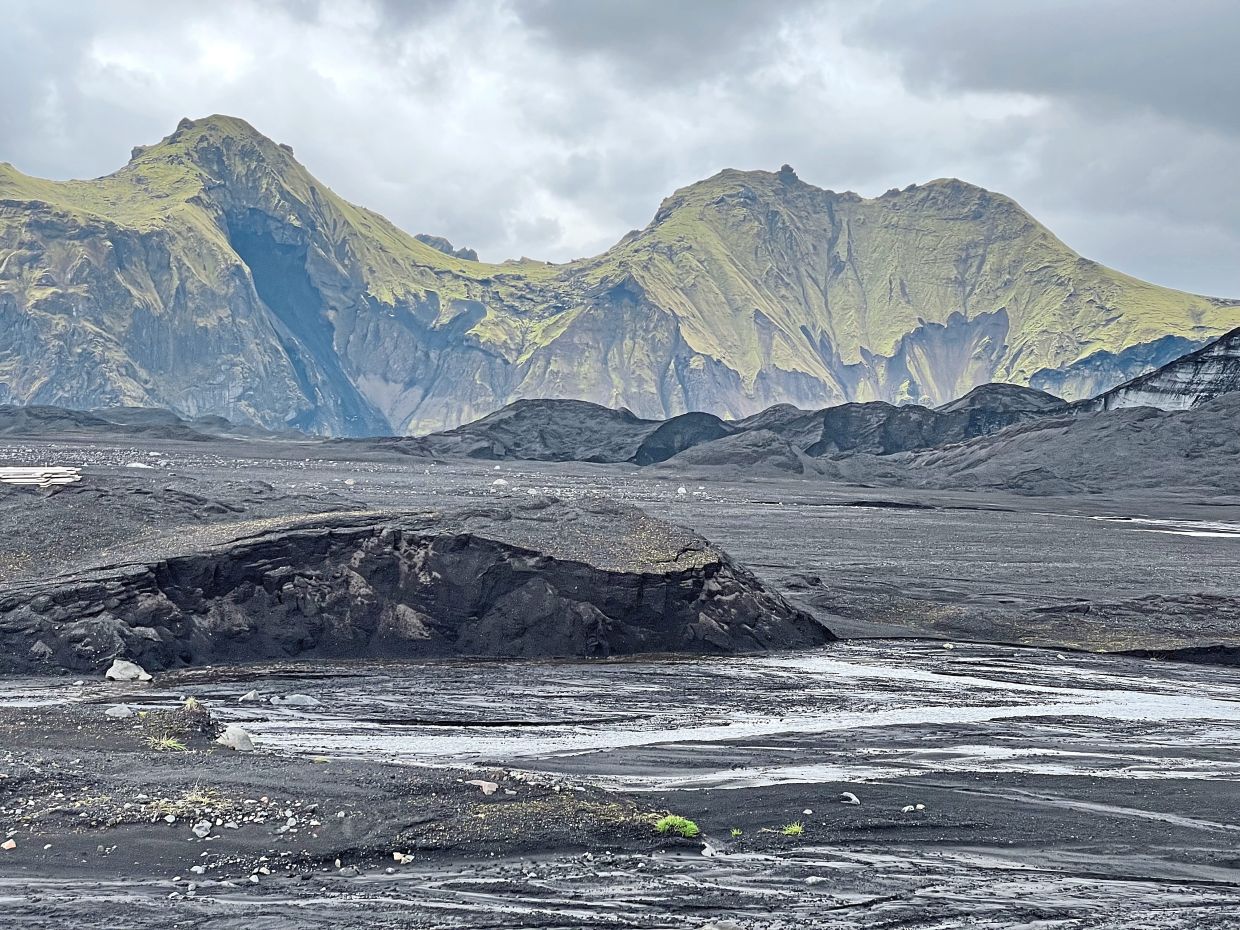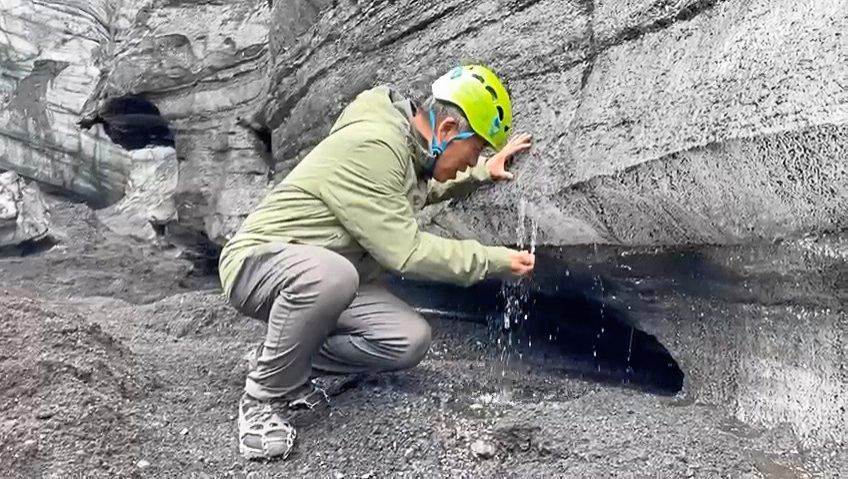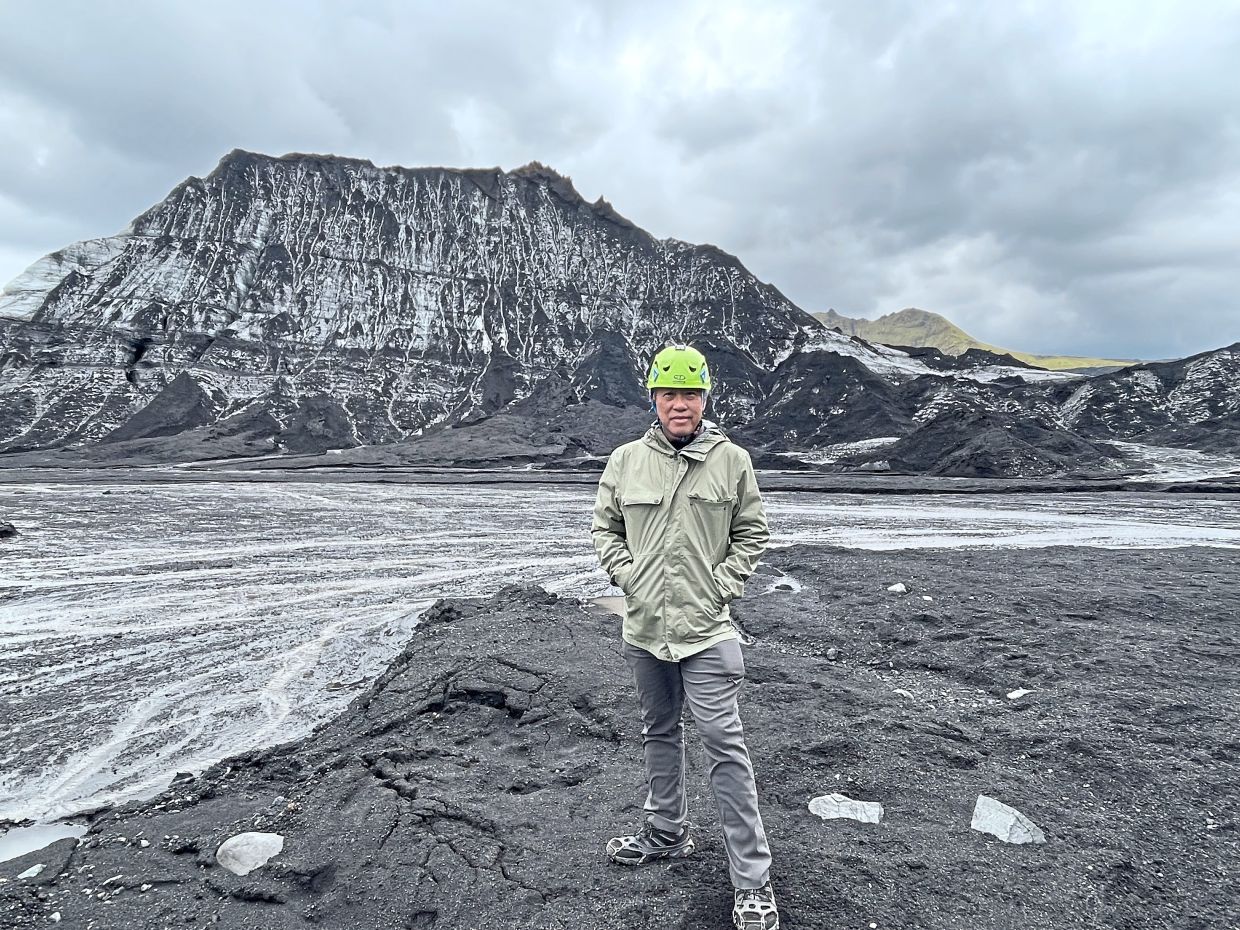
A view of Katla, the volcano in Iceland.
The setting of Katla in Iceland, one of the country’s most volatile volcanoes, resembles Mars.
This is a place where volcanic eruptions have occurred against similar breathless landscapes.
To put it simply, I’ve never experienced or seen such terrain. After all, I’m from Malaysia, where we’ve yet to experience natural disasters of such magnitude because we live just off the Ring of Fire.
So, it’s not surprising that Katla has often been used as a movie location, featured in the likes of blockbusters such as Star Wars, Game Of Thrones and Transformers.
Three hours after driving from Reykjavik, the capital of Iceland, we finally hit the desolate rural roads.
The closest civilisation is Vik, a remote seafront village where Katla is located.
Most roads outside the capital are narrow. With unscheduled stops, it turned out to be a gruelling five hours in the end.
Finally, our vehicle slipped off the main road and the bumpy ride commenced. Now, here’s where the fun really began.
We had to first navigate through the rugged terrain towards Katla on a 4×4 super Jeep.

Drinking pure water straight from the rocks of Katla, a volcano in Iceland.
Barely 15 minutes in, I saw insanely jaw-dropping sights of black volcanic sand plains juxtaposed against moss-covered green hills.
These were simply stunning formations that I’d never seen before.
On my second visit to Iceland in the recent summer, I couldn’t resist the temptation of walking on both a glacier and a volcano.
Katla is famous for its iconic blue ice cave during winter and in the summer, it’s essentially just black sand, but I still didn’t want to forego this adventure.
After all, this is home to the Katla volcano and the Myrdalsjokull glacier, the southernmost glacier in Iceland, covering nearly 600sq km, with its highest peak almost 1,500m high.
So, what’s needed for this ice-capade? For starters, there’s plenty of walking. My wife and I had decided, years back, that with our knees still strong, we would take on all these tough trips first.
There’s a certain amount of hiking, too, and in some slippery parts, I opted to go on my knees and buttocks even!
There were carved steps as well as ropes for visitors to hold on to when entering the cave, but I was still apprehensive and nervous.
The thing with glaciers is that the landscape keeps changing. It’s perhaps easier to walk through the terrain in summer. With snow-covered grounds during winter, it can get slippery and more difficult.
Warm and waterproof clothing is a must in Iceland, unless it’s summer, of course. A pair of sturdy shoes will take you the distance, too.

The writer at Katla, a place he needs to return to soon to experience the ‘blue ice’. — Photos: FLORENCE TEH
You’ll need to join a tour, where you’ll be provided with safety helmets, gloves, head lamps and crampons (a metal plate with spikes fixed to a boot for walking on ice).
The glaciers and natural glacial ice caves can only be visited with a trained and experienced guide.
I would still want to see the blue ice of Katla, which has made these caves iconic. Known as glacier blue, this is the result of air being squeezed from the frozen ice and snow. The scientific explanation is, the ice absorbs every other colour except blue.
As the journey ended, the guide switched on the radio, and David Bowie’s late 1960s nugget Space Oddity, came on, and I instantly knew it was a sign that I had to return.
Yes, the mission has not been completed. And like Major Tom seeking redemption, I must return in the winter. I must see the blue ice.
If I can’t make it to Mars, the mysterious and stunning landscapes at Katla are close enough for me.





